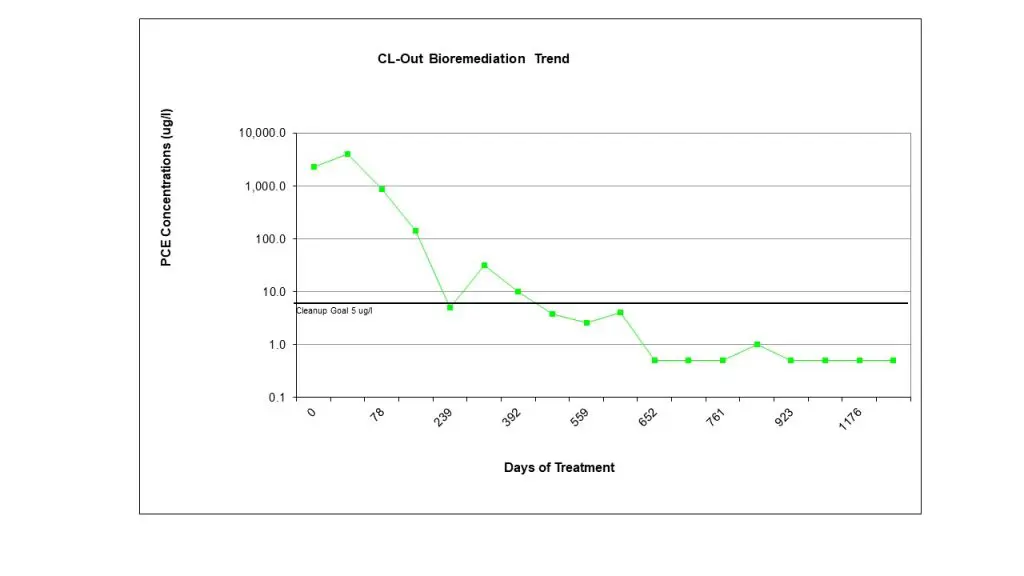Dry Cleaner Bioremediation and Brownfield Redevelopment
Site Description
Dry cleaning solvent spills in a storage area lead to the contamination of soil and ground water on the property of a 50-year-old dry cleaners in the middle of a hot brownfield redevelopment. After the contaminated soil was excavated for off site disposal to the most practical extent, residual perched ground water contamination impacted the redevelopment of the property.
The soil excavation was used as an infiltration gallery as part of a recirculating ground water recovery and treatment system. The flushing reduced contaminant concentrations, but the levels were still far above the levels required to achieve no further action status. CL-Out was added to the recirculating ground water and the cleanup goals were achieved in less than two years and were maintained through two years of post treatment monitoring.
Site Characteristics
Geology and Hydrogeology
The site is on a fluvial terrace adjacent to the Ohio River. The shallow soils are clayey silts to sit to eight feet deep. An interbedded sandy zone that formed the first water-bearing zone was encountered from 8 to 12 feet deep. Perched ground water occurred in the sandy zone at 12 feet below grade.
Ground Water Contamination
The size of ground water plume that resulted from the spills was estimated to be 3,500 square feet. The ground water contamination was mainly PCE with a maximum concentration of 11,000 ug/l prior to soil removal or ground water treatment. The daughter compounds TCE and DCE were detected up to 17 and 12 ug/l respectively. After three years of recirculation and flushing, the maximum PCE concentration was reduced to 2.3 ug/l and the daughter compounds were below detection limits.
Results
CL-Out bioaugmentation was implemented to supplement the flushing system. By adding CL-Out on two occasions over two years, the contaminant concentrations were reduced to below drinking water standards. During two years of post treatment monitoring the DCE concentrations rebounded to above the MCLs. CL-Out bioaugmentation was implemented again and within three months the contaminant levels were below drinking water standards and remained below drinking water standards for nine months. After post closure monitoring verified the cleanup goals would be maintained, the KDEP issued a “No Further Action” letter for the site.
The following chart shows the PCE contaminant trend in one of the key monitoring wells during the remediation and post closure monitoring.
Cost
The CL-Out cost during this remediation project was less than $10,000.


